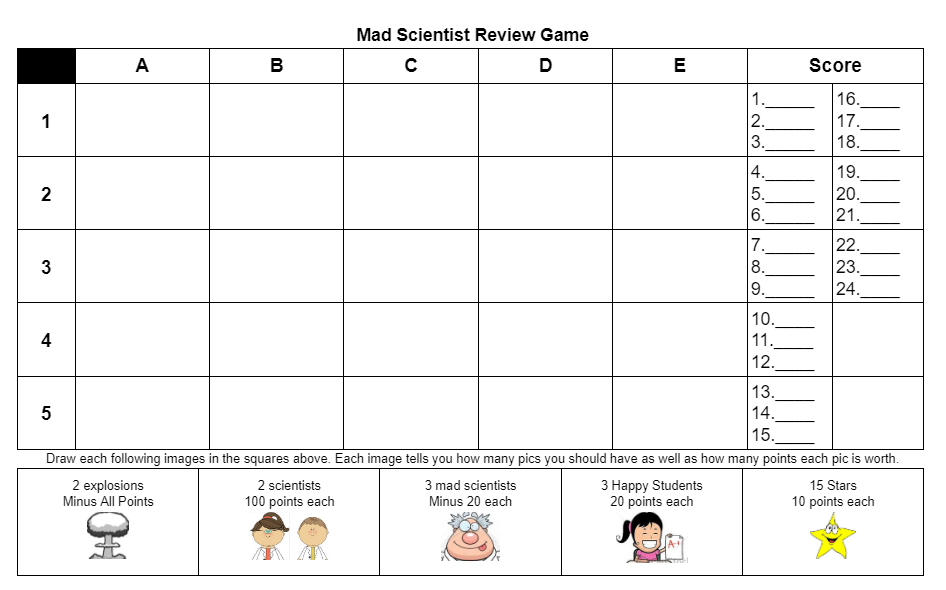The Mad Scientist Vocabulary Review Game
Preview/Download

Introducing "The Mad Scientist Game," an exciting and interactive review activity designed to make studying for tests enjoyable and engaging for students. This game is perfect for teachers looking for a fun way to review concepts and vocabulary with their classes. With simple rules and an element of competition, students will have a blast while reinforcing their knowledge.
The Mad Scientist Game creates a lively and dynamic atmosphere in the classroom, fostering active learning and student participation. It allows for vocabulary and concept review while providing an opportunity for friendly competition. Although it may not always be completed within one session, the game is adaptable to different time constraints. Students will love the energy and excitement of this review activity, ensuring an effective and memorable study experience.
Please note that the game requires minimal preparation and can be played multiple times throughout the year. It serves as a fantastic tool for reviewing content and reinforcing key concepts. Add this exciting game to your teaching repertoire and watch your students' enthusiasm for learning soar!
For more educational games, labs, activities, worksheets, and videos please keep browsing EducationalResource.org as new content is often added.
For instructions on the review game play read below.
How to Play:
- Each student needs a blank lined piece of paper. They should write their name on the paper, which will serve as their answer sheet.
- Number the paper from 1 to 24.
- On the provided handout, students will find a set of images along with the number of each image and the points it is worth. Instruct students to draw the images on their answer sheet. Encourage them to keep it simple and not spend too much time on the drawing aspect.
- Once the drawings are complete, allow some time for students to number their lined paper accordingly.
- As the teacher, you will ask review questions, and students will write the answers on their lined paper within a given time limit.
- After counting down the seconds, ask for a volunteer to share the answer. Then, call out a random square, for example, A2.
- Instruct all students to cross out the called square on their answer sheet. If the question was answered correctly, students will award themselves the corresponding points for the crossed-out image. However, if an explosion is crossed out, all previously earned points are wiped out, and the student starts over at zero.
- Repeat the process, asking questions, calling out squares, and allowing time for students to update their point totals.
- Clarify any questions students may have, such as whether losing points applies if an explosion is crossed out without answering correctly or what to do if time runs out before finishing the answer.
- Maintain an honest and fair playing environment. Cheating is discouraged, as students are seated close enough to report any inappropriate behavior.
- Create opportunities for students to share and compare their game cards during breaks every five questions. This adds to the excitement and engagement of the game.
- Throughout the game, involve students in discussions about remaining explosions and make predictions about which squares certain students might have. This further heightens the fun and anticipation.
- To conclude the game, stop five minutes before the bell rings, regardless of progress. Have students count their points and raise their hands if they reach specific point thresholds (e.g., 100 points, 200 points, etc.). Verify the accuracy of the counts and crossed-out squares.
- Determine the winner based on the highest point total, and celebrate their achievement.
